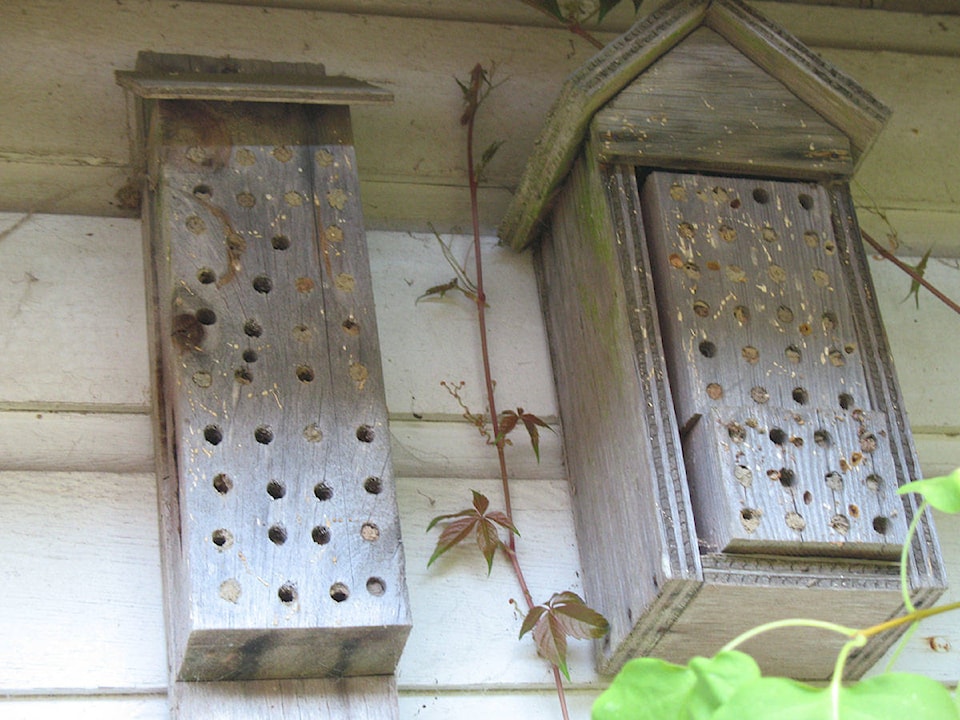Two years after planting them, some of our fruit trees filled with blossoms and we anticipated a nice crop. It didn’t happen, and I suspect it was a shortage of pollinators. In previous years I went out with a soft brush and pollinated my trees personally but with 80 more this year I thought I might have a little faith in what my mother told me about birds and bees. Besides, bees do a far more thorough job.
I am just a little disappointed with mom.
Evidently I have a choice between an orgy of manual pollination or enticing some industrious apians to do it for me. With 80 fruit trees the effort of attracting a few hundred bees may be daunting, but given the alternative it seems worth the attempt.
A local beekeeper insists that his hives are within easy pollinating distance, but they never put in an appearance. Perhaps, with all their closer liaisons, his bees did not discover my blossoms in time. I will consider planting some early blooming flowers to get their attention but, if I may be forgiven for mixing my metaphors, they aren’t the only fish in the lake.
Orchard mason bees, also called blue orchard bees, find their own nesting places in anything suitable, such as holes in my greenhouse door handles, although they might prefer a bee house with predrilled holes. Given that these bees emerge from their nests about the same time my trees flower, I will encourage them to live in my orchard. Honeybees go looking for pollen around April, but can my fruit trees wait that long? They began flowering in February this year.
We can encourage mason bees by hanging a nesting house or two among our fruit trees. Early spring sun brings them out soonest, so I’ll talk David into installing the house(s) facing east after I convince him to make them. As summer gets a foothold the developing bees in the houses might find the heat intolerable, but if they’re located under the growing canopy of fruit trees this should be enough to keep the houses cool. I’ll set out a couple of shallow dishes filled with pebbles and water for the bees and plant early bloomers, perhaps heather, among the trees.
In her book Pollination With Mason Bees, Margriet Dogterom suggests we first set the nesting houses somewhere in the wild, in February before dandelions bloom and transfer them to our home garden once the houses are filled with bee larvae around midsummer. Good places to hang the nests to attract wild mason bees are where flowers abound and a water source exists nearby.
Mason bees prefer wood or paper nesting houses and will lay their eggs inside tubes that are 7.5 mm in diameter and 15 to 20 cm deep. Shorter tubes will produce mostly males, and I’m sure there’s a reason for this. The nest should be protected from wind and rain, facing east where early morning sun will warm up the bees. These aptly named masons need a source for mud to build their nests, and Ms. Dogterom has a brilliant idea for those of us whose sandy gardens have no clay: dig a hole two feet wide and one foot deep, put some clay in a bucket small enough to fit into the hole and add enough water to moisten the clay. Check it every week to add more water, if necessary.
She also suggests protecting the nests from woodpeckers by “crimping chicken wire over the front of each nest. Woodpeckers have a long tongue, so place firm chicken wire with 2.5 cm diameter holes around the front of the nest, five to eight cm away from the nesting tunnels.”
Bees prefer natural wood, so I’ll have to prevent David from painting them or adding flags. That may be fine for birdhouses but mason bees are proletarian, and unpretentious.
Please contact mary_lowther@yahoo.ca with questions and suggestions since I need all the help I can get.
